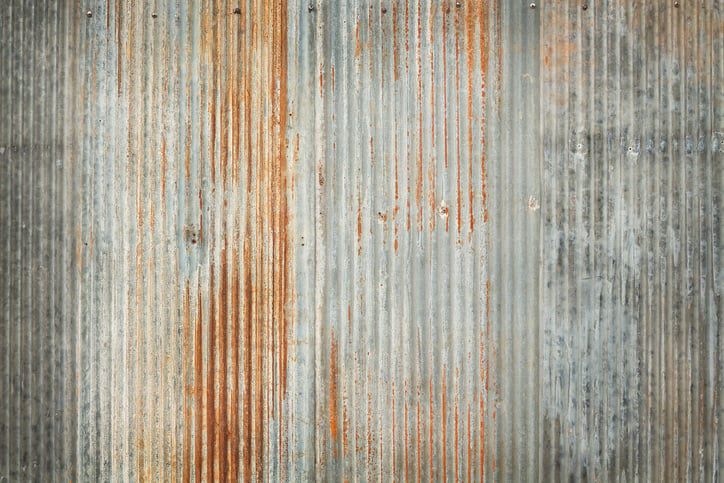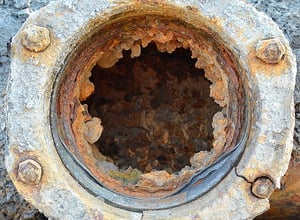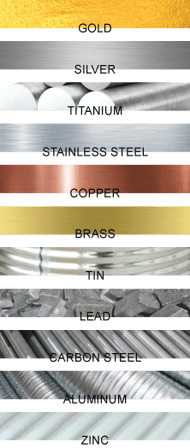
Ever wonder why steel wool rusts when it’s left sitting on a stainless steel sink? Ever notice how aluminum foil covering lasagna will be eaten away if it’s wrapped around a steel pan?
Both are examples of what can happen when you put dissimilar metals together. But when you step onto a jobsite, working with dissimilar metals turns into a whole new monster with dire potential consequences.
Understanding dissimilar metals can help you protect against dangerous combinations that lead to corrosion, destroyed projects, and potential on-site disasters.
We’re here to supply the know-how to stop that from happening. Read on for a simple guide to dissimilar metals.
What Are Dissimilar Metals?
To understand dissimilar metals, you have to go deep—to a subatomic level.
Different metals have different properties, and an important difference is their nobility. Nobility is how resistant a metal is to corrosion. Noble metals are stingier with their electrons, whereas base metals give away their electrons more easily.
How easily a metal gives up its electrons is what determines its place on the galvanic scale. So, in the same environment, a metal like aluminum will give up its electrons more easily than a metal like stainless steel. This ability to retain electrons makes stainless steel more resistant to corrosion.
However, to understand nobility and dissimilar metals, it’s best to get a grasp on the corrosion process.
The Nitty-Gritty on Corrosion
 The most important type of corrosion for understanding dissimilar metals is galvanic corrosion. Galvanic corrosion happens when dissimilar metals rub against one another in wet or grimy environments.
The most important type of corrosion for understanding dissimilar metals is galvanic corrosion. Galvanic corrosion happens when dissimilar metals rub against one another in wet or grimy environments.
Here’s how it works:
Let’s say you’re working with stainless steel and aluminum. Stainless is more noble than aluminum. In addition to being better at holding on to its electrons, stainless naturally takes electrons from aluminum whenever it can. The electrolyte makes it easier for stainless to steal electrons. When the trio combines, that turns into a corroded piece of aluminum.
What Metals Get Along? What Metals Don’t?
In order to avoid galvanic corrosion, you should avoid metals on opposite ends of the galvanic scale. If there’s a large gap in the nobility of two metals, they probably won’t get along together.
 Here’s a general list of some common metals, running from more noble (on top) to more basic (on bottom):
Here’s a general list of some common metals, running from more noble (on top) to more basic (on bottom):
- Gold
- Silver
- Titanium
- Stainless steel
- Copper
- Brass
- Tin
- Lead
- Carbon steel
- Aluminum
- Zinc
Since stainless steel and aluminum have a large gap in nobility, they’re dissimilar. That means pairing them up will have a higher chance of leading to galvanic corrosion.
On the other hand, metals like copper and stainless steel are similar. That’s why steel pipes and copper tubing work well together.
The same goes for copper and lead or tin. They’re similar enough that they usually don’t need to be insulated from one another.
Environments That Affect Dissimilar Metals
Corrosion between dissimilar metals can be enhanced by their environment. For instance, a common electrolyte, water, can jumpstart the corrosion process between two metals.
That’s why galvanic corrosion is kicked up a notch in moist or humid environments. Bacteria and other grime can also act as an instigator between metals.
Minimizing the Negative Effects of Dissimilar Metal Pairings
However, sometimes it just makes more sense to work with dissimilar metals. This is often the case with dissimilar metals like stainless steel and carbon steel. Carbon steel is strong, but corrosive. So, it can make sense to add sleek, stainless steel to outer finishes.
Luckily, there are ways to stop galvanic corrosion.
One way is to add a buffer or insulator between the metals. In piping, this might take the form of pipe skates. On nuts or beams, it can be accomplished with washers.
Galvanizing can also protect against galvanic corrosion. In this process, a layer of zinc is laid down on the outside of the more basic metal. Since zinc is more basic than most metals, it gives up its electrons first, sparing the core metal beneath.
Cut Corrosion out of Your Next Job
Understanding dissimilar metals and other corrosion causes can help you safeguard against disasters. Have a question about materials for your next job? Send us a note with the details, and we’ll help point you in the right direction.





